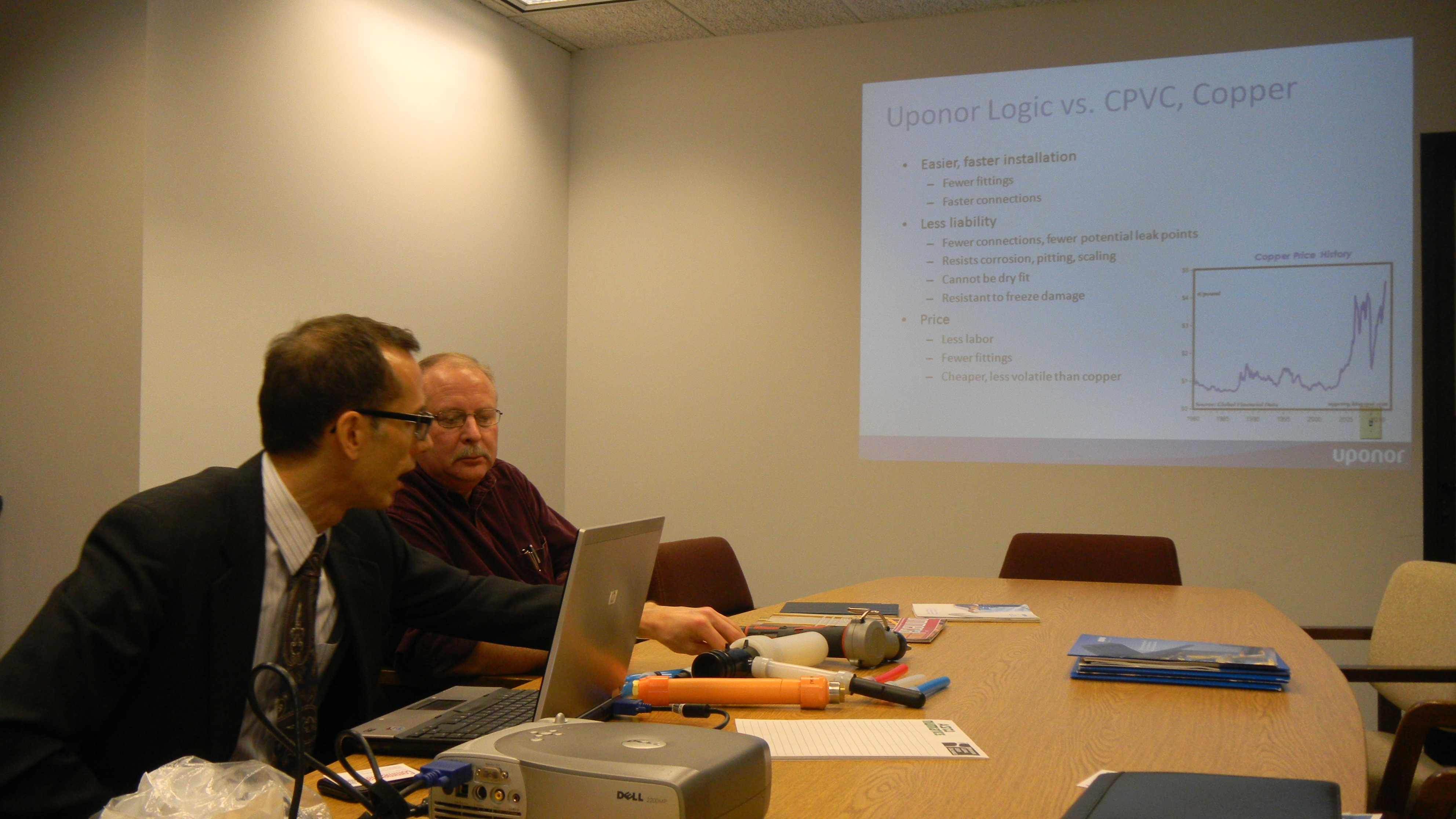- Jan
- 6
How to Stage an Effective Media Tour: Part 2
Posted on January 6, 2012 by — No Comments
This entry is Part 2 of our look at the fundamentals of staging effective media tours. View Part 1 here. Below is a slideshow of images from a recent media tour for Uponor in Chicago.
Fundamental #2: Have something to show. Visual aids are a must and typically take the form of a PowerPoint presentation. I can hear you suppressing a yawn, but a slide show has solid practical value in holding the editors’ attention, while making what you say more concrete and therefore more memorable—especially if your slide show is part of your leave-behind. (More on that in a bit.)
In creating the PowerPoint or whatever tools you prefer, don’t shortchange the visual imagery. The editors may not read along as you move from slide to slide. But strong pictorial elements, especially of product components, cutaways, schematics, graphs, tables, flow charts and the like will help make your words resonate. And your audience won’t fail to appreciate the care you have taken in crafting your presentation.
The only communications aid better than an image or an illustration is the thing itself. If possible, bring actual products or components, so that the editors can see and touch that special new finish or unique functionality first-hand. The hands-on approach will generate more interest, more questions and more enthusiasm for whatever you are presenting.
On my most recent media tour, the client highlighted his company’s proprietary method for making pipe connections, which can seem a rather mundane affair when left solely to verbal descriptions. Step-by-step graphics are better, but how about actually making a connection right there in front of the editors? That’s what my client did, and his rather quick and simple demo made a solidly positive impression on each group of editors. When one asked to do a connection himself, it was easily one of the highlights of that session. What better way to persuade an editor of the value of your product or system?
Fundamental #3: Have something to leave behind. While building relationships is the primary benefit of a media tour, clients understandably expect a more tangible payoff in the form of actual publicity. The surest way to make that happen is to create a press kit dedicated solely to the meeting or media tour. Also, be sure to bring enough copies so that all attendees can have one if they wish.
This kit should contain press materials relating to your presentation, including news releases and photography of new and recently introduced products. But you might also want to include relevant case studies, white papers, product brochures, as well as your PowerPoint presentation and a corporate backgrounder that the editors can keep on file for future reference. Anything that adds to their understanding of your company and its mission is of potential interest.
That may sound like information overload, which is why I strongly recommend making the kit electronic: Editors will accept paper kits, but they love the easy portability and “file-ability” of a disc and, best of all, a flash drive. Do not miss this opportunity to impress the press. The fastest way to an editor’s heart—and to the pages of his or her publication—is to make the job of using your materials easier.
Fundamental #4: Find converging interests. Generating more publicity for the brand is at the top of the wish lists of most marketers, regardless of the state of the economy or the market. Meanwhile, editors find themselves constantly scrambling for information and ideas to meet the relentless content requirements of their proliferating communications outlets, print and online.
One of the best ways to discover where exactly your mutual interests converge is through a face-to-face dialogue with the editors. Trade shows and other venues offer numerous occasions for such meetings, but except for a tour of your own factory, none matches the effectiveness of a “deskside” get-together for building relationships and identifying ways to meet editor interests and needs.



































Be the first to leave a comment!